The nine tribes of the internet
Download as PPT, PDF85 likes9,783 views
Lee Rainie discusses the changing internet ecosystem and identifies 9 tribes that represent different levels of engagement with digital technology. The tribes fall into two categories - those motivated by mobile connectivity and those tied more to stationary media. Each tribe is characterized by their demographics, technology habits, and suggestions for how organizations can effectively engage with each group online.
1 of 45
Downloaded 823 times
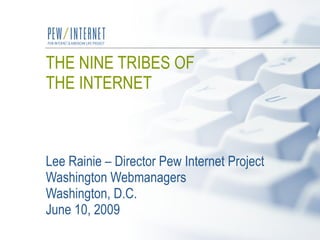
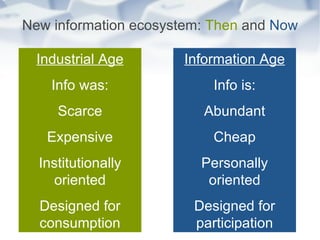
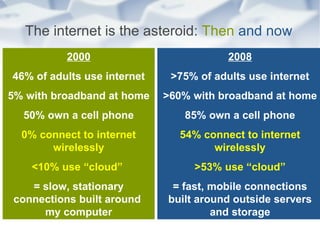
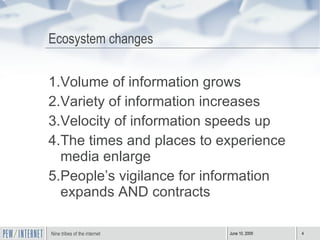
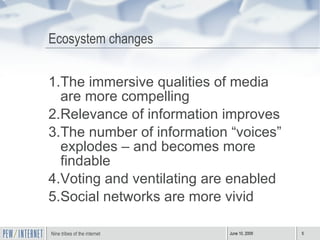
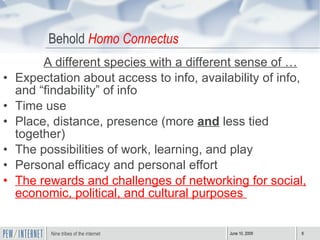
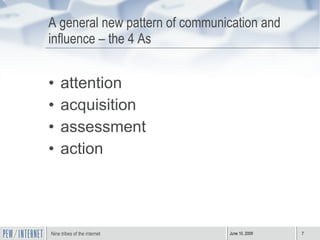
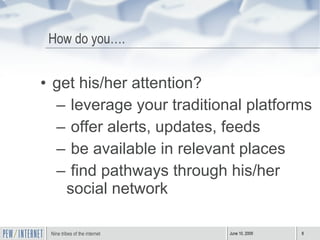
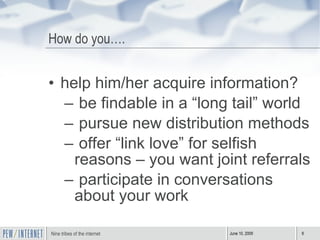
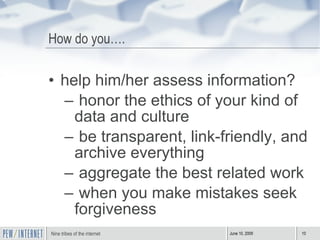
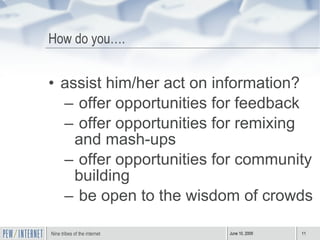
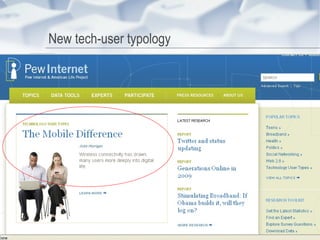
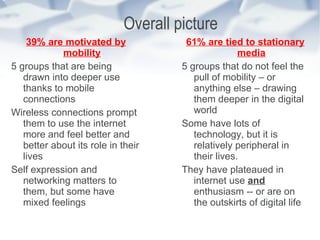
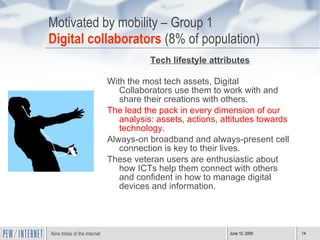
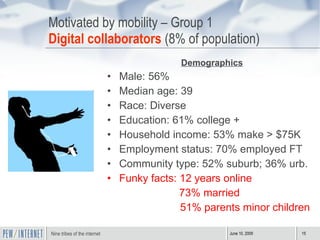
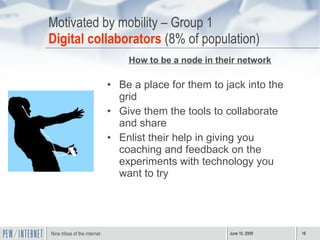
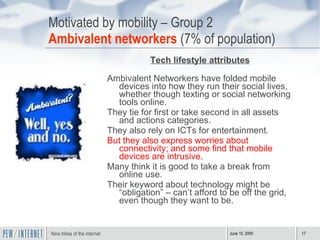
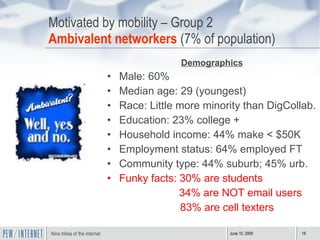
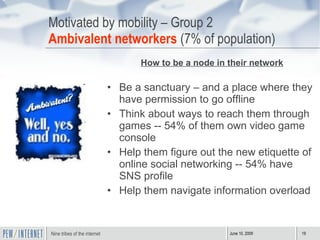
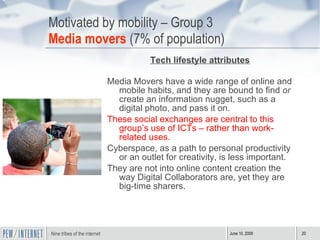
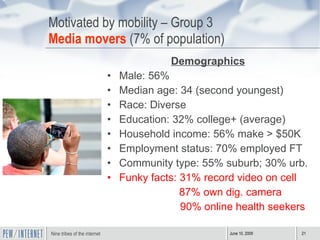
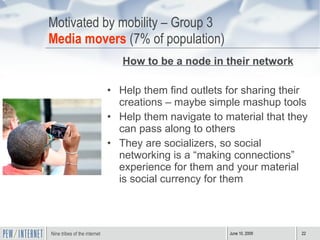
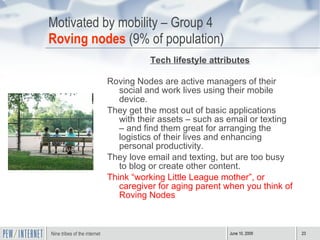
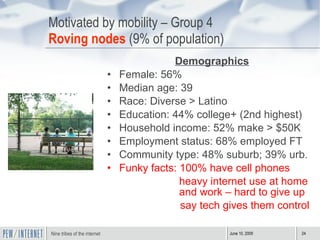
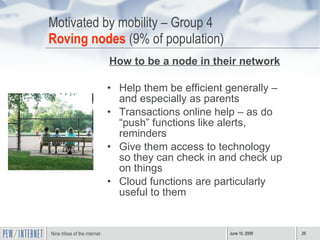
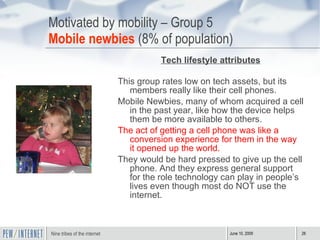

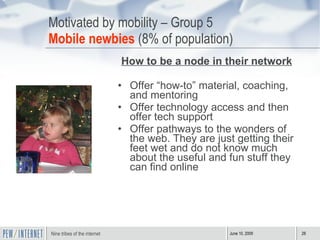
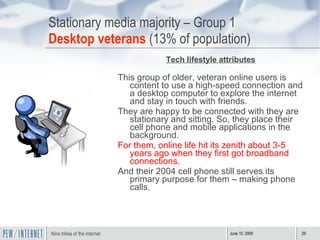
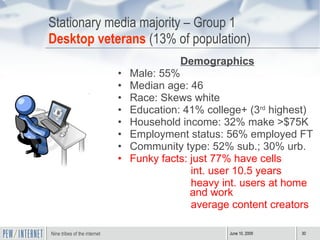
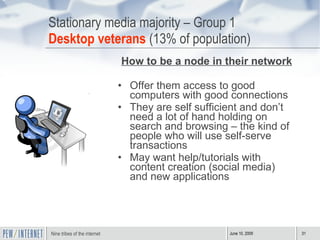
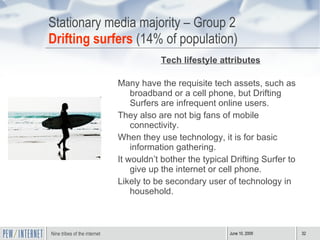
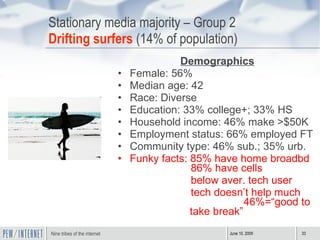
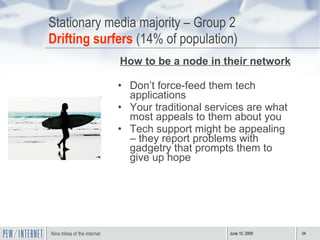
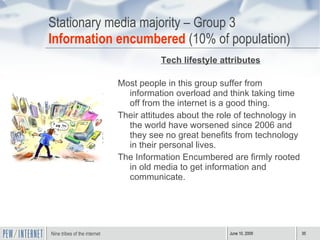
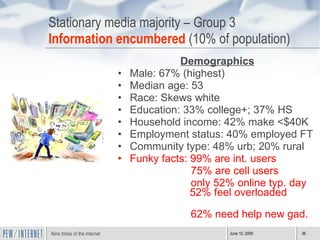

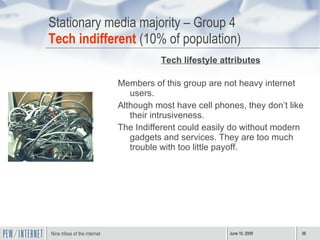
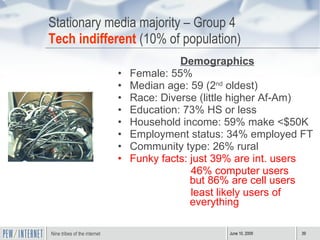
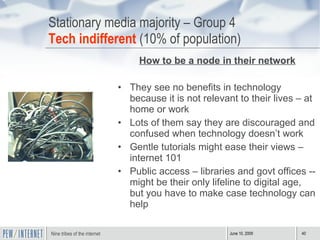
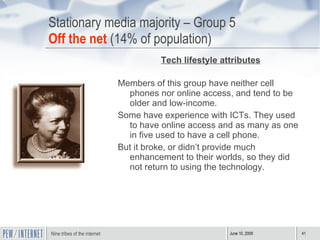
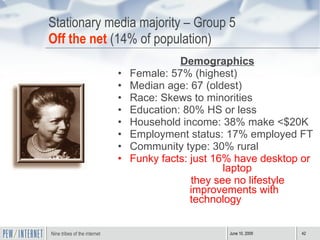
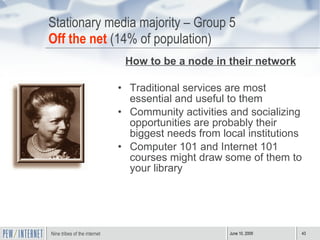

![Thank you! Lee Rainie Director Pew Internet & American Life Project 1615 L Street NW Suite 700 Washington, DC 20036 Email: [email_address] Twitter: http://twitter.com/lrainie 202-419-4500](https://image.slidesharecdn.com/2009-6-10-09-washingtonwebmanagers-ninetribes-posted-090609133415-phpapp02/85/The-nine-tribes-of-the-internet-45-320.jpg)
Ad
More Related Content
What's hot (19)
PDF
Mobile is the Needle, Social is the Thread: How Information Today is Woven In...
21 slides6.9K views
Viewers also liked (9)
Ad
Similar to The nine tribes of the internet (20)
PPT
Shyam Swaroop and Manukonda Rabindranath-Internet and participatory culture-o...
35 slides374 views
PPTX
Damásio et al, 'Mobile Devices as drivers of Social Capital' at Communities i...
26 slides353 views
Ad
Recently uploaded (20)
PDF
Bridging biosciences and deep learning for revolutionary discoveries: a compr...
17 slides91 views
PPTX
breach-and-attack-simulation-cybersecurity-india-chennai-defenderrabbit-2025....
11 slides90 views
The nine tribes of the internet
Editor's Notes
- #2: TITLE: The nine tribes of the internet SUBJECT: Lee will cover the latest findings of the Pew Internet & American Life Project about broadband adoption and wireless connectivity. He will explore why government agencies, associations, activists, and businesses should use different digital strategies to serve the needs of each tribe. Title: Who loves the internet and who doesn't Subject: Lee will run through the latest research of the Pew Internet & American Life Project, especially the Project's new market segmentation analysis that shows 10 different kinds of technology users. He will discuss how webmanagers can do their work in an environment where users have different needs and expectations.
